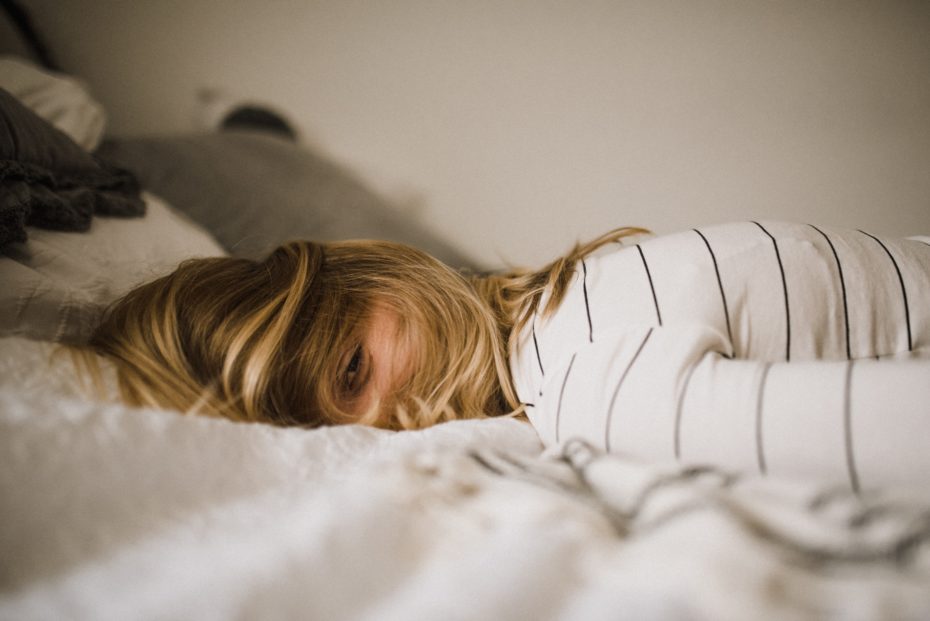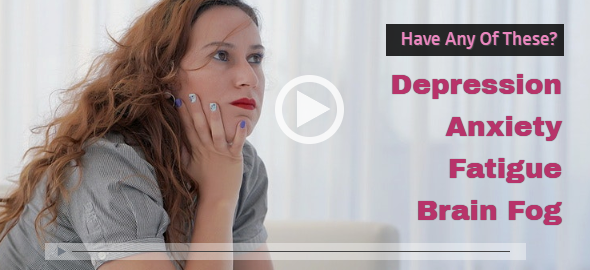National Trends
Suicide in the elderly may surprise you, but before we jump into the statistics, can you think of anyone you know or someone you heard of over 65 (65 is a bit arbitrary, it’s a number traditionally used by researchers) who committed suicide? If so I hope some of this information helps.
First of all let’s take a quick look at the facts about suicide: among Americans of all ages 12.4 out of 100,000 commit suicide for those 65 and older that number was 14.9 out of 100,000, and for white elderly males the rate is 29 out of 100,000, (2010, CDC).
What about Oregon?
Currently about one in five suicides in Oregon occur among older adults, with an annual average of approximately 100 deaths. While Oregon has launched efforts to reduce suicides among youth, from 1999-2003 the suicide rates among adults aged 65 and older were three times higher than rates for those aged 10-24 (average rates of 27.12 vs. 8.49).
In the next three decades the aging of the baby boomers will cause the number of older adults in Oregon to double and the proportion of the population in this age group is expected to increase to 24%, which represents a 78% increase. As Oregon’s population ages, the problem of suicide among older adults is likely to grow concomitantly, unless something is done to prevent it, (Oregon Older Adult Suicide Prevention Plan Executive Summary, March 2006, pg. 1).
Future Trends?
It’s clear that the rate of suicide for elderly white males over 65 is nearly 3 times the overall average for all Americans, but it’s actually worse. We have heard about the greying of the US for years, but it is happening faster than what was once predicted, and it is happening faster due to declines in fertility and declines in mortality.
An online report by CNN Money stated: “The U.S. fertility rate fell to another record low in 2012, with 63.0 births per 1,000 women ages 15 to 44 years old, according to the Centers for Disease Control and Prevention. That’s down slightly from the previous low of 63.2 in 2011.”
It marked the fifth year in a row the U.S. birth rate has declined, and the lowest rate on record since the government started tracking the fertility rate in 1909. In 2007, the rate was 69.3. (It takes 2.1 children per woman for a given generation to replace itself, and U.S. births have been below replacement level since 2007. As of last year, a separate CDC analysis shows an American woman will give birth to an average of 1.88 children over her lifetime, also a record low.)
In terms of mortality Americans who were expected to live to 65 in 1972 could expect to live another 15.2 years (that’s 80.2 years), in 2010 that number grew to 19.1 more years (or 84.1).
Suicide Rates by Gender
For many years, the suicide rate has been about 4 times higher among men than among women. In 2010, men had a suicide rate of 19.9, and women had a rate of 5.2. Of those who died by suicide in 2010, 78.9% were male and 21.1% were female.
Suicide Rates by Race/Ethnicity
In 2010, the highest U.S. suicide rate (14.1) was among Whites and the second highest rate (11.0) was among American Indians and Alaskan Natives. Much lower and roughly similar rates were found among Asians and Pacific Islanders (6.2), Blacks (5.1) and Hispanics (5.9). (See Final Notes for an update on who has a higher rate than white males).
(Note that the CDC records Hispanic origin separately from the primary racial or ethnic groups of White, Black, American Indian or Alaskan Native, and Asian or Pacific Islander, since individuals in all of these groups may also be Hispanic.)
The chart below shows the overall suicide rate in the United States in 2007, (so slightly different from the above numbers from 2010) as well the rates for different sexes, races and ethnicities, and age groups.
Additional information about suicide can be found on NIMH’s suicide fact sheet and on NIMH’s suicide prevention page.
National Trends
Suicide in the elderly may surprise you, but before we jump into the statistics, can you think of anyone you know or someone you heard of over 65 (65 is a bit arbitrary, it’s a number traditionally used by researchers) who committed suicide? If so I hope some of this information helps.
First of all let’s take a quick look at the facts about suicide: among Americans of all ages 12.4 out of 100,000 commit suicide for those 65 and older that number was 14.9 out of 100,000, and for white elderly males the rate is 29 out of 100,000, (2010, CDC).
What about Oregon?
Currently about one in five suicides in Oregon occur among older adults, with an annual average of approximately 100 deaths. While Oregon has launched efforts to reduce suicides among youth, from 1999-2003 the suicide rates among adults aged 65 and older were three times higher than rates for those aged 10-24 (average rates of 27.12 vs. 8.49).
In the next three decades the aging of the baby boomers will cause the number of older adults in Oregon to double and the proportion of the population in this age group is expected to increase to 24%, which represents a 78% increase. As Oregon’s population ages, the problem of suicide among older adults is likely to grow concomitantly, unless something is done to prevent it, (Oregon Older Adult Suicide Prevention Plan Executive Summary, March 2006, pg. 1).
Future Trends?
It’s clear that the rate of suicide for elderly white males over 65 is nearly 3 times the overall average for all Americans, but it’s actually worse. We have heard about the greying of the US for years, but it is happening faster than what was once predicted, and it is happening faster due to declines in fertility and declines in mortality.
An online report by CNN Money stated: “The U.S. fertility rate fell to another record low in 2012, with 63.0 births per 1,000 women ages 15 to 44 years old, according to the Centers for Disease Control and Prevention. That’s down slightly from the previous low of 63.2 in 2011.”
It marked the fifth year in a row the U.S. birth rate has declined, and the lowest rate on record since the government started tracking the fertility rate in 1909. In 2007, the rate was 69.3. (It takes 2.1 children per woman for a given generation to replace itself, and U.S. births have been below replacement level since 2007. As of last year, a separate CDC analysis shows an American woman will give birth to an average of 1.88 children over her lifetime, also a record low.)
In terms of mortality Americans who were expected to live to 65 in 1972 could expect to live another 15.2 years (that’s 80.2 years), in 2010 that number grew to 19.1 more years (or 84.1).
Suicide Rates by Gender
For many years, the suicide rate has been about 4 times higher among men than among women. In 2010, men had a suicide rate of 19.9, and women had a rate of 5.2.
Of those who died by suicide in 2010, 78.9% were male and 21.1% were female.
Suicide Rates by Race/Ethnicity
In 2010, the highest U.S. suicide rate (14.1) was among Whites and the second highest rate (11.0) was among American Indians and Alaskan Natives. Much lower and roughly similar rates were found among Asians and Pacific Islanders (6.2), Blacks (5.1) and Hispanics (5.9). (See Final Notes for an update on who has a higher rate than white males).
(Note that the CDC records Hispanic origin separately from the primary racial or ethnic groups of White, Black, American Indian or Alaskan Native, and Asian or Pacific Islander, since individuals in all of these groups may also be Hispanic.)
The chart below shows the overall suicide rate in the United States in 2007, (so slightly different from the above numbers from 2010) as well the rates for different sexes, races and ethnicities, and age groups.
Additional information about suicide can be found on NIMH’s suicide fact sheet and on NIMH’s suicide prevention page.

This chart is included primarily to give a visual feel to all the data.
For women the suicide rate peaks between the ages of 45-49 then declines after 60. For men the rate peaks like women’s and then declines before climbing again after 60 and peaking in their 80’s.
Even worse than the stats?
Suicide among the elderly are likely under reported:
Because of the stigma, “Coroners will go to great lengths to call it something else,” said Patrick Arbore, founder and director of the Center for Elderly Suicide Prevention in San Francisco. “If it’s an overdose, they can call it an accident.” (The NY Times, The New Old Age blog, Suicide Rates Are High Among the Elderly By Paula SPAN, 8/7/2013).
Patrick Arbore goes onto say that, “Moreover, depression is behind a majority of suicide attempts and a lot of older people have problems asking for help”. Especially asking for mental health help.
What is the cause of suicide?
Researchers do not speak of the cause of suicide but rather the risk factors, since there is no direct cause.
Dr Conwell, psychiatrist at the University of Rochester medical Center who has studied late-life suicide states, “Elderly suicide is generally a result of multiple factors: physical illness, depression, and a recent loss. If you change one of those parameters it may tip the balance in favor of finding solutions that help you want to live”.
Another factor is brain chemistry. Research into brain chemistry shows that people who committed suicide had decreased serotonin in their brains. As expected 60% of elderly suicide victims had a mood disorder such as major depression, bipolar disorder, or dysthymia. Along with these factors is the exposure to suicide. Exposure to suicide increases the risk of suicidal behavior.
Prior treatment for mental health is another risk factor. People who have ever been treated on an outpatient basis have a 2% risk rate; those ever treated on an inpatient basis have a 4% rate and those ever treated and have a history of suicide attempts have a 6% rate.
Younger people who commit suicide often have a substance abuse disorder in addition to having depression, although it is a complicated picture, this is not true for the elderly.
Why are elderly white males so vulnerable?
No one knows for sure but several theories include the fact that males are less likely to ask for help, white males may have greater expectations for their status in life, they tend to think of themselves as being loners and do not want to burden others. Hispanics and blacks have strong family and religious communities and there may be a fatalistic belief among minorities that life is not necessarily going to work out. The lethality of male suicide is attributed to the fact that they are the most likely group to use firearms.
Ageism also plays a role, society and the healthcare professionals often see elderly with significant bias. In 2003, the Alliance for Aging Research, guided by Dr. Butler’s concerns (who coined the term ageism), published a report to the U.S. Senate Special Committee on Aging called Ageism: How Healthcare Fails the Elderly. The report examined the following domains of ageism in healthcare:
- Healthcare professionals do not receive sufficient training in geriatrics
- Older patients are less likely to receive vaccines and other preventive care
- Older patients are less likely to be tested or screened for common health problems
- Effective medical interventions beneficial for older patients are often ignored, leading to inappropriate or incomplete treatment; and
- Older people are consistently excluded from clinical trials, though they are the largest users of tested and approved drugs and devices.
The Alliance documented how these manifestations of ageism take a serious toll and harm older patients by exacerbating and prolonging illness, isolation, unnecessary institutionalization, loss of independence and premature death.
Negative stereotypes of older people are internalized early in life: they operate on the subconscious, and are as virulent in elders as in younger people. Ageist attitudes among healthcare providers lead to missed or delayed diagnoses, poor management of multiple chronic conditions, lost independence, overuse, under-use and misuse of prescription drugs, and more.
What can be done?
Research shows that 70% of older suicide victims have been to their PCP within a month of their death. That means there is an opportunity to reach the people who need help the most.
“The current mental health delivery system is inadequate and unprepared to address the needs associated with the anticipated growth in the number of older persons requiring treatment for late-life mental disorders.”—MICHAEL HOGAN, PhD, former chair of the 2003 President’s New Freedom Commission on Mental Health
Hogan recommends:
- BETTER, MORE INTEGRATED SERVICES
Older patients undergoing treatment for mental disorders do best in a collaborative setting, according to recent research. This setting is a primary care one, with a mental health provider to provide assessment, clinical treatment services and coordination with the PCP. Evidence-based models such as IMPACT and PROSPECT are based on this collaborative approach with a cross-functional team highly engaged with each patient; these models have shown noteworthy success in treatment of mental illnesses in aging populations.
3. MORE HEALTH CARE WORKERS
Given current estimates, there will not be enough health care workers, caregivers’ and peer support staff to meet the mental health needs of this population.
“There is a pressing need to develop a workforce with specialized training in gerontology and geriatric mental health,” notes Hogan. “We need HHS, state mental health authorities and other entities to develop a workforce with specialized skills to provide services to older persons with mental disorders. This includes psychiatrists, psychologists, nurses, social workers and frontline service providers. It also includes enhancing family caregiver and peer support services.”
Further, U.S. older persons are less likely to report thoughts of suicide to others and to use mental health services. Thus, interventions are needed to prevent suicidal behavior also among those with no prior history of suicidal behavior and those who do not seek psychiatric treatment.
Thoughts of suicide become less prominent or frequent when depression remits in older persons who are treated for depression. Preventing or treating depression could thus constitute powerful suicide prevention strategies for this age group. The possible preventive role of depression screening and follow-up was highlighted via a meta-analysis of quasi-experimental studies of older adults in several Japanese regions. Reduced suicide rates were observed in the intervention regions, particularly in women. Collaborative care models (CCM) for depression which involve augmenting depression treatment in primary care with expert mental health consultation and medication recommendations, psychoeducation for patients, and the option of brief psychotherapy have been shown to reduce suicide ideation among older adults in the U.S. .
The take away?
- Examine your own ageism, because you have some degree of it.
- Look carefully for this profile but remember it is only an incomplete one: White, male, over 65, recent loss, physical impairment or reduction, socially isolated, no robust religious connections externally or internally, history of mental health issues. Probe for any history of prior suicide or attempts by himself of actual or attempted suicide in his friends or family.
- Err on the side of caution towards prevention to make a referral to: PCP, SW, PNP, psychiatrist, psychologist, counselor, and group therapy, especially those who are trained in geriatrics.
- There are good treatments that exist in antidepressants, and different forms of talk therapy including CBT, and psychodynamic, among others.
Final Notes on an Overlooked Minority
The Bay Reporter, June 12, 2014, in the online version, reports that
A survey of 616 LGBT city residents aged 60 to 92 years old, the results of which were released this week, found that 15 percent had “seriously considered” committing suicide within the last 12 months.
This is much higher than any other studies I have found. I have also spoken to Lauren Fontanarosa, SAGE Metro Portland Coordinator, who confirms that the LGBT elders have a far higher suicide rate than any other group. This topic is of great importance and I look forward to understanding suicide among the LGBT elderly community more. For those interested in this topic I recommend the documentary, Gen Silent by Stu Maddux (2011).

Richard Powell, M.A., OT/L




 Acupuncture
Acupuncture Fibromyalgia Syndrome (FMS) affects an estimated 2 percent of the population. It is diagnosed when there is a history of widespread pain in all four quadrants of the body for a minimum duration of three months, and pain when pressure is applied to at least 11 of 18 designated tender points on the body. In addition to musculoskeletal pain, patients with fibromyalgia can suffer fatigue, sleep disturbance, memory loss, mood swings and digestive problems.
Fibromyalgia Syndrome (FMS) affects an estimated 2 percent of the population. It is diagnosed when there is a history of widespread pain in all four quadrants of the body for a minimum duration of three months, and pain when pressure is applied to at least 11 of 18 designated tender points on the body. In addition to musculoskeletal pain, patients with fibromyalgia can suffer fatigue, sleep disturbance, memory loss, mood swings and digestive problems.
